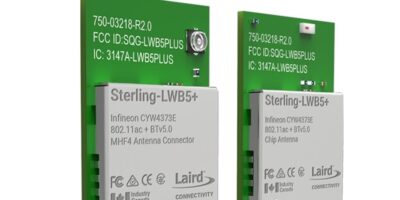Anglia Components has expanded its sensor portfolio with the environmental and flow sensors from Sensirion, manufacturer of digital microsensors and systems. Anglia says the sensors will enhance its customer designs across a range of industrial and new emerging markets, such as Internet of Things sensing applications.
Commenting on the partnership, John Bowman, marketing director, Anglia, said: “We have invested in an inventory profile and evaluation/development kits to assist customers with new designs, all of which are available with no minimum order quantity via Anglia Live. Our engineers have been fully trained on Sensirion’s products and are ready to assist customers with their design-in.”
Sensirion’s environmental sensors measure key environmental parameters, such as ambient humidity and temperature, volatile organic compounds, carbon dioxide and particulate matter. Their digital multi-pixel gas sensors are designed for easy integration into air treatment and monitoring devices. One of the features of Sensirion products is the use of its CMOSens technology, which allows for intelligent system integration of the sensor element, logic, calibration data and digital interface on a single chip.
The sensors can be used in intelligent household appliances, smart homes, medical applications and as well as a meant to help improve air quality. Control of air quality is thought to be crucial in combatting covid and making buildings safe for employees to return to when advised.
Sensirion’s line up of flow sensors can measure a wide range of gases and liquids. The range also includes gas meter modules, differential pressure sensors, mass flow meters for gases as well as support for customer specific solutions.
“We are pleased to announce Anglia as a new distributor. This strong new partnership will allow us to expand our reach in the UK,” said Florian Hirsch, director channel sales, Sensirion. “Anglia already has an excellent network of customers who can now benefit from our sensor portfolio. We at Sensirion are looking forward to this collaboration.”







